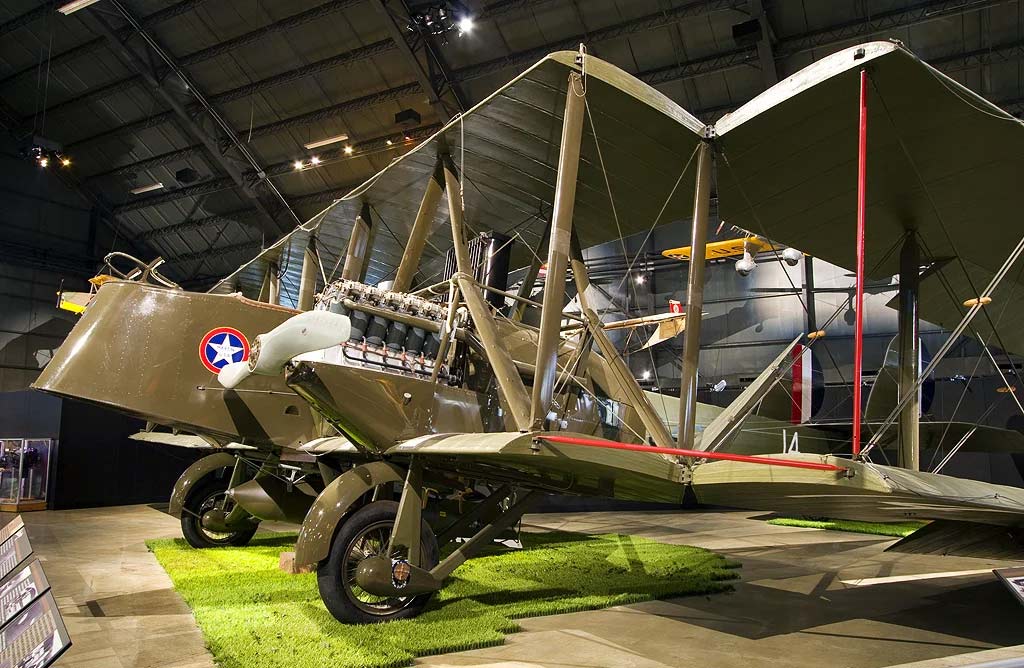The Martin NBS-1 was a twin-engine American biplane bomber, a stalwart of interwar military aviation with significant payload capacity. The Martin NBS-1 article explores the development and significance of this early American bomber, detailing its design, performance, and military role. It provides insights into the aircraft’s historical context, analyzes its technical specifications and contributions to aviation, and discusses its operational history, including its successes and eventual obsolescence.
In the early 20th century, the burgeoning field of military aviation was rapidly evolving. Amidst this transformative era, the Martin NBS-1 emerged as a prominent figure in the United States Army Air Service’s bomber fleet.
History of the Development of the Martin NBS-1:
Developed in the wake of World War I, the Martin NBS-1 (Night Bomber, Short range, Model 1) was part of a strategic shift toward aerial bombardment capabilities for the U.S. military. As Europe’s skies bore witness to the destructive potential of bombers, the United States sought to enhance its own air power.
The NBS-1 was an evolution of the earlier Martin MB-1, with the program initiated by the Glenn L. Martin Company. The objective was to produce a bomber that could perform night-time bombing missions with greater payload and range than its predecessors. Launched in the early 1920s, it responded to the military’s need for a robust, multi-role aircraft capable of defensive and offensive operations.
The first NBS-1 took to the skies on May 1920, marking the beginning of a significant era in American military aviation.
Design of the Martin NBS-1:
The NBS-1’s design retained the biplane structure common to the era, with a fabric-covered steel tube frame. It was 44 feet 2 inches (13.46 meters) in length, with a wingspan of 71 feet 5 inches (21.77 meters) and a height of 14 feet (4.27 meters). The aircraft’s empty weight was around 7,800 pounds (3,538 kilograms), with a maximum takeoff weight of 12,952 pounds (5,877 kilograms).
It boasted twin Liberty L-12 engines, which were water-cooled V-12s, a standard for U.S. military aircraft of the period. The choice of the reliable Liberty engine was both an advantage for logistics and maintenance but also a limitation, as the technology was rapidly becoming outdated compared to newer powerplants.
The NBS-1 was known for its robust construction, which allowed for durability in challenging conditions. Its ability to carry a substantial bomb load for its size was impressive for the time. However, its relatively slow speed and limited defensive armament were drawbacks in an era of increasing aerial threats.

Performance of the Martin NBS-1:
The Liberty engines, each producing 400 horsepower, propelled the NBS-1 to a maximum speed of 99 miles per hour (159 kilometers per hour), a modest pace by later standards. The aircraft’s service ceiling topped out around 10,500 feet (3,200 meters), with a range of approximately 558 miles (898 kilometers).
While not a powerhouse when compared to later bombers like the B-17 Flying Fortress, the NBS-1 was a capable aircraft within the context of its time. Its performance was adequate for the short-range missions for which it was designed.
Military Use and Combat of the Martin NBS-1:
The NBS-1 was armed with five .30 cal (7.62 mm) machine guns and could carry up 2,800 pounds (1,270 kilograms) of bombs. Its military use was primarily within the United States, where it served as a mainstay bomber throughout the 1920s.
It saw no combat, but the NBS-1 played a significant role in the development of U.S. bombing tactics and doctrine. The aircraft participated in several high-profile exercises, including the sinking of captured German warships to demonstrate the potential of aerial bombardment.
Competitors of the NBS-1 included the contemporaneous British Vickers Vimy and the French Breguet 14, both of which served similar roles in their respective air services. The NBS-1 was not sold to other countries, and its service was exclusive to the United States.
The aircraft was eventually replaced by more advanced bombers in the 1930s, such as the Martin B-10, which offered better speed, range, and payload capacity.
The Martin NBS-1 played a crucial role in the transitional period of military aviation between the World Wars. It was a symbol of the United States’ commitment to developing strategic bombing capabilities and contributed valuable lessons that would shape the future of aerial warfare. While it may not have been the most technologically advanced aircraft of its time, its legacy is enshrined in the annals of military aviation history.
Back to the Bombers section.